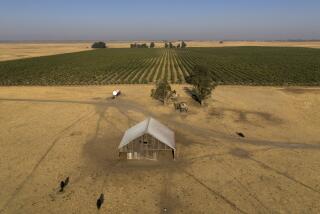COVINA : New Committee Will Examine Potential Merger of 2 Cities
- Share via
Would you call it Covina Valley? Covina Heights?
In the latest outgrowth of merger mania to fight hard times, a former mayor of West Covina and a former Covina councilman are forming a committee with an eye to merging the two neighboring cities by a vote of residents. They see it as a natural reuniting of conjoined twins who perhaps never should have separated; the two were once one, but West Covina seceded in the 1920s.
With the Covina City Council decision Tuesday to approve an 8.25% utility tax to maintain services and West Covina facing the possible closure of the BKK landfill that provides millions of dollars to the city in fees, former West Covina Mayor Forrest Tennant and former Covina Councilman Chris Lancaster said both communities are facing tough times and a new solution is needed.
So Tennant and Lancaster are creating a citizen’s committee of local leaders and former officials to examine the economic benefits of unifying the two communities.
The two former leaders said they will campaign to put the issue on the ballot in both cities if the committee finds the merger would make a 30% savings across the board in expenditures and the 44,000 Covinians and 94,000 West Covinians show interest in a vote.
“If you merge you are going to eliminate a lot of bureaucracy. You’ve got two of everything,” said Tennant, a physician who specializes in drug detoxification. “Look at businesses today . . . even the local hospitals merged,” he said, referring to the merger of Covina’s Inter-Community Medical Center and West Covina’s Queen of the Valley Hospital in April.
Lancaster, who was recalled from Covina’s council in July, 1993, because of his vote for a 6% utility tax, said the two cities would no longer waste money competing against the other for new businesses. “Covina simply can no longer afford to compete with West Covina. It cannot put up the millions for car dealerships,” he said.
If the plan came to fruition, it would create a city of nearly 150,000 residents. The pair argue that only a city this size can afford to have its own police, fire, parks and recreation departments and library. Size has other advantages, they said. “A city of that size would have a lot more political clout in the San Gabriel Valley,” Lancaster reasoned. “When it came to reapportionment, we’d get one assemblyman, one senator and one congressman.”
They said the alternatives are bleak for smaller cities with declining revenues and increasing bills; often such cities are forced to contract out services or impose new taxes or fees, they said.
But officials in the two cities dismissed the chances of merger, saying neither city would want to take on the problems of the other.
West Covina Mayor Bradley McFadden said of Covina: “Their financial position is so bad I don’t know if it would be wise. I don’t want a utility tax coming to West Covina. I don’t think there’s an outcry for us to join with Covina.”
He said West Covina at this time is in a far stronger position financially than its neighbor and thus would have little to gain from merging. McFadden added that he does not expect his city to face a financial crisis when the landfill closes.
But McFadden said he would be interested in the results of any study by the committee and could see such a thing happening in the next century if cities face even tougher times.
Covina City Manager Fran Delach said the effects of merging the cities can be achieved by merging services but not the political control. “We can contract with each other for things we do well,” he said. “You can have your cake and eat it.”
In addition, Delach said he would recommend against a merger because of West Covina’s possible liability for the cleanup the BKK Landfill if the site is declared a Superfund site by the U.S. Environmental Protection Agency. The site could get such a designation if the owners cannot afford to pay for the cleanup themselves.
More to Read
Sign up for Essential California
The most important California stories and recommendations in your inbox every morning.
You may occasionally receive promotional content from the Los Angeles Times.













